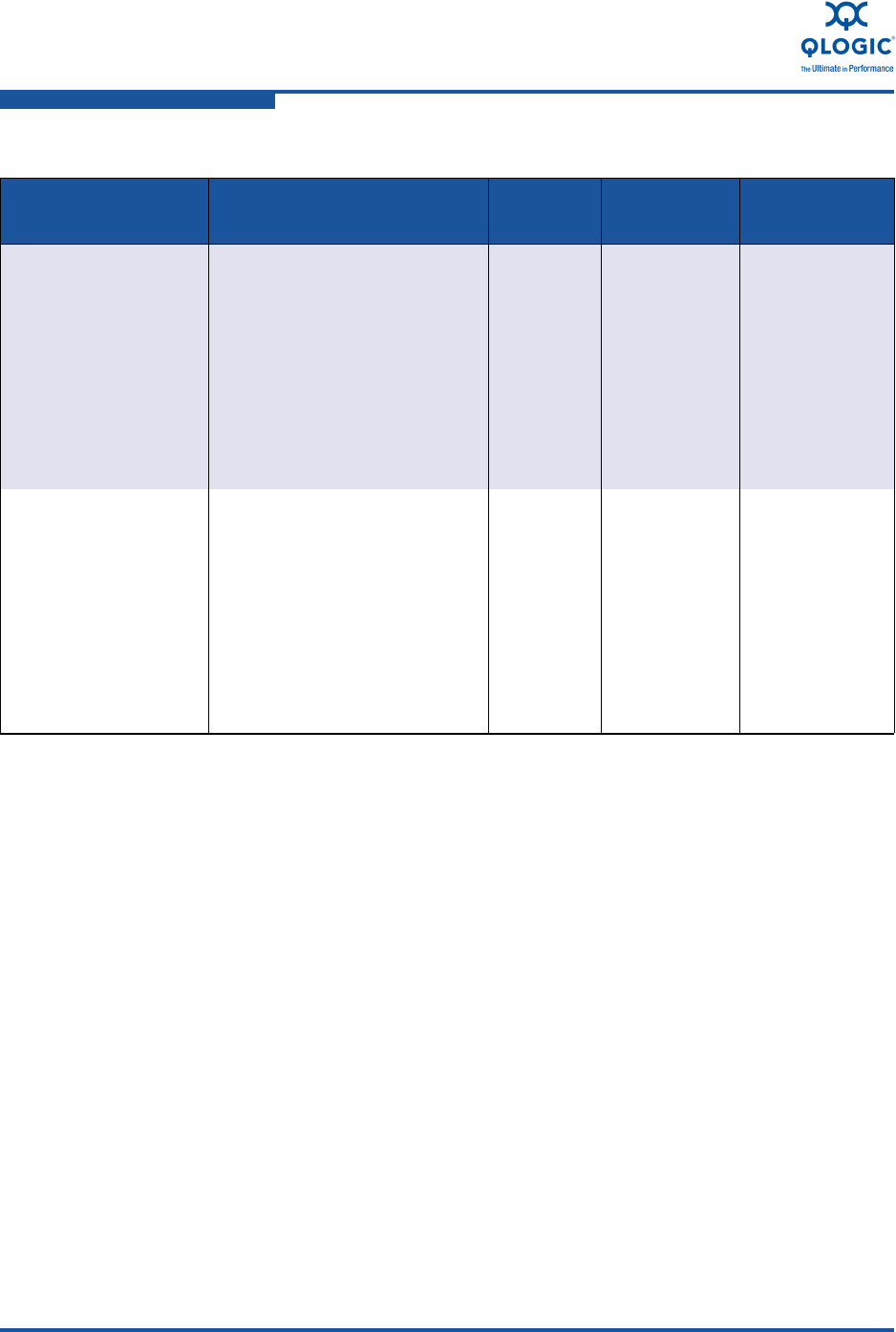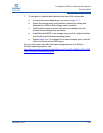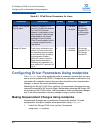
8–Configuring FCoE in a Linux Environment
Configuring Driver Parameters Using modprobe
8-6 FE0254601-00 A
Configuring Driver Parameters Using modprobe
The modprobe Linux utility intelligently adds or removes a module from the Linux
kernel, and is available with RHEL 5. Adapter driver parameter modifications that
you make with modprobe require that you either reload the driver (nonpersistent
change), or reboot the server (persistent change).
Reloading the QLogic FCoE driver (qla2xxx) for nonpersistent changes does not
interrupt the adapter’s NIC function (qlge). Neither does reloading the QLogic NIC
driver interrupt the FCoE function. Use modprobe to make nonpersistent changes
only if the driver parameter cannot be changed using any other method.
Making Nonpersistent Changes Using modprobe
Nonpersistent changes are not preserved across server reboots. To make
nonpersistent changes to adapter driver parameters using modprobe:
1. Unload the QLogic FCoE driver module. For example:
#modprobe –r qla2xxx
Enable Fibre Channel
Tape Support
Enables or disables FCP-2
recovery. Disable this parame-
ter if the Fibre Channel
adapter is connected to a stor-
age subsystem. Most storage
subsystems do not support
sending I/O from the same
Fibre Channel adapter to both
a storage subsystem and a
tape device.
1 0—Disabled
1—Enabled
Fast!UTIL,
QConverge-
Console GUI,
or QConverge-
Console CLI
Enable LIP Reset Type of loop initialization pro-
cess (LIP) reset to use when
the operating system initiates
a bus reset routine. Enabling
this parameter initiates a
global LIP reset to clear the
target device reservations.
Disabling this parameter initi-
ates a global LIP reset with full
log in.
0 0—Disabled
1—Enabled
QConverge-
Console GUI or
QConverge-
Console CLI
Table 8-1. FCoE Driver Parameters for Linux
Parameter Description Default Range
Configuration
Method


















